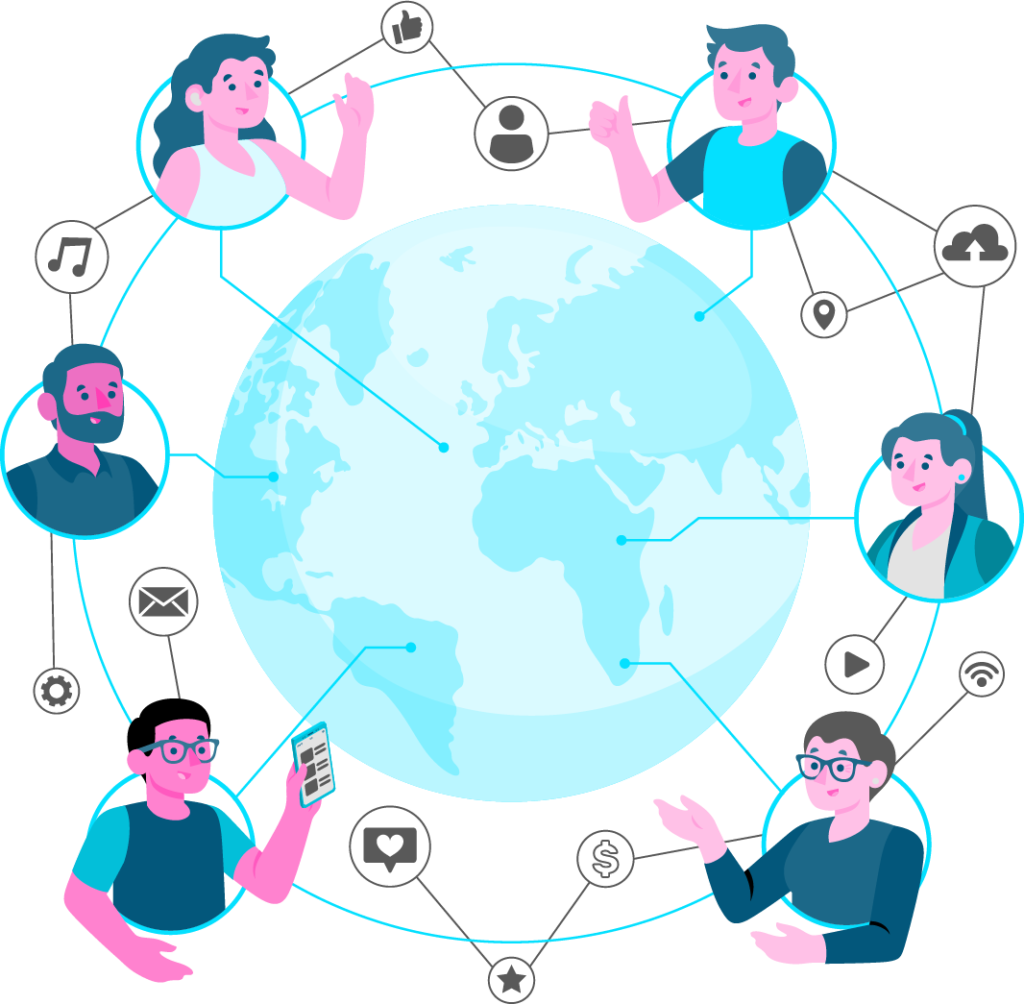Some people see translating your website into English as a good decision. For us, there's no other option: it's a basic requirement if you want to have an international presence and impact. And putting it in the hands of translation and international marketing professionals is more than recommended.
You have an enterprise, business, or project with a website; it's the norm nowadays. And things are going well (great!), so you want to grow and open doors to new markets. The first step will almost definitely be translating your website into English. Why?
Approximately half of the world's websites are in English. Coincidence? No, of course not... It's the same as the offline world (nuances aside) - international markets work in the English language. So, if you want to go further than the Pyrenees and Gibraltar, there's not a lot left to say. But regardless, here are our reasons (including why you should always leave it to the professionals).
Why is it important to translate your website into English?
It's the 'national' language in the powerhouses of the USA, the UK, Canada, Australia and South Africa, an official language in more than fifty countries, the language par excellence of international institutions and online... And although it 'only' comes in third place worldwide in terms of languages with the highest number of native speakers (a mere 350 million speakers), it's estimated that English is spoken by another 1 billion people as a first language.
That should give you more than enough answers to your question. If not, think about the number of people from dozens of countries and cultures, speaking various native languages, who all understand it and use it - albeit with varying levels of fluency. It's the undisputable lingua franca of the modern world. If you don't translate your website into English, you're excluding yourself from communicating with all those people.

Translating your Spanish website into English: your shortcut to internationalisation
Hang on: you might argue that people prefer to buy in their native language, each market has its own particularities, and ideally you should translate your website into as many languages as possible (perfectly correct). And it's true; so, translating your website into English isn't some kind of magic bullet.
But can you imagine how many languages you'd need to translate your website into if you wanted to reach literally everybody? The effort and financial implications compared to your ROI? Which is why we see translating an online store into English (the content, brand image, etc) as a neat shortcut: a quick and effective way of reaching places as diverse as Sweden, the Philippines and Nigeria, in one fell swoop.
Benefits of translating your website into English
The phrase “can't read, won't buy” coined by international consultancy firm CSA Research has already become commonplace in the field of marketing. Aside from that, here are the three main advantages of prioritising an English translation of your website.
Expand your international target audience
English is a language everyone understands; whether they're native speakers, or use it in an official, educational or business context. By the same token, translating into English means multiplying your target audience exponentially on all five continents.
When you broaden your audience, it makes lead generation infinitely easier. India is a prime example: with 23 languages and 1,600 dialects, English is the second and third language for 8% and 4% of the population, respectively; this represents around 150 million people. As a potential market, that's not bad...
Boost your website ranking (international SEO)
We've said it before, and we'll say it again: Whichever way you look at it (content, websites, number of searches, traffic density, etc.), English is the internet language par excellence. You don't need to be an SEO expert to realise that if you want to play on the international field, you'll need to pay attention to your English SEO.
Among the various factors that affect SEO ranking, many are directly related to the language. Keyword selection and content generation may be the most obvious, but meta tags (language, geolocation and others) also pack a punch, and they can be a differentiating factor in your ranking.
Improve the user experience
It's widely proven that the user experience (the famous UX) is much improved when communication takes place in the user's native language. The world's 350 million native speakers of English don't speak the language for functional purposes or prestige; if the website isn't in English, they'll close the tab and go elsewhere.

In this case, you're also generally talking about people from more developed countries with easy internet access, an entrenched habit of buying goods and services online, and high purchasing power; just the type of potential customers you want to reach - and convert. With a little luck, a good UX in their language will bring you a lot more sales.
Why translate your website via an agency?
At this point, many small businesses and digital enterprises come up against a logical dilemma: Should we translate and internationalise our website in-house, with a bit of help from our computer friend and brother-in-law who knows some English? Or would we be better off hiring translation services from professionals and specialists?
Let us stress the right answer for you: agencies like ATLS help you take advantage of opportunities in foreign markets; they help you avoid the kinds of translation mistakes and pitfalls that frequently damage the quality of translated websites, crushing your marketing efforts - and financial results.
International translation professionals

Because it's not just about grabbing a dictionary and cracking on. Translation and marketing professionals translate and market, but we also give you the advice you need to develop a winning internationalisation strategy. First, for example, we'll evaluate your case, determining whether you need to localise rather than translate (or even transcreate).
We work on business translations on a daily basis, and we've developed the technical and cultural skills necessary for tasks such as defining your brand image and SEO, going beyond mere translation. We've faced (and overcome) these difficulties before, and we know exactly how to resolve them.
Improve your international expansion strategy with translation
Because translation (in the broadest sense) is no longer just one more part of your wider growth strategy: it requires a plan, campaigns and actions, based on experience and in line with best practices specific to the international digital marketing trade and speciality.
Common pitfalls of website translation (and how to avoid them)
If you're wondering what the benefits of working with the professionals are, here's a list showing the most common errors in website translation and the most common solutions (in brackets):
- Literal translation (translators that know your target market)
- Not tailored to the market (localisation/globalisation/internationalisation techniques)
- Inappropriate tone (native transcreators and copywriters)
- Translation errors (double-checked by professional reviewers and LQA)
- Lack of SEO strategy (carrying out an audit and subsequent analysis)
- HTML code not translated (specific CAT tools)
- Accessibility issues (analysing and testing the user experience)
- Dynamic content not translated (workflow automation)
How to translate a website and capture global audiences: the essential steps
From the customer's perspective, if you want to translate a website, and do it well, all you need to do is choose the right translation agency (our tip: ask these questions). Want more details? Here's a summary of the essential steps:
Analysing results of SEO ranking and other metrics, and making adjustments in line with international marketing criteria.
SEO audit of your monolingual website (if any) and your target markets and audiences.
Multilingual SEO strategy planning; specifically, which languages to translate (English is a given).
Localising products/services, SEO parameters and website in line with your audit and plan.
Content translation with a continuous workflow: send > translate > quality control > delivery.
Experimental UX analysis.






